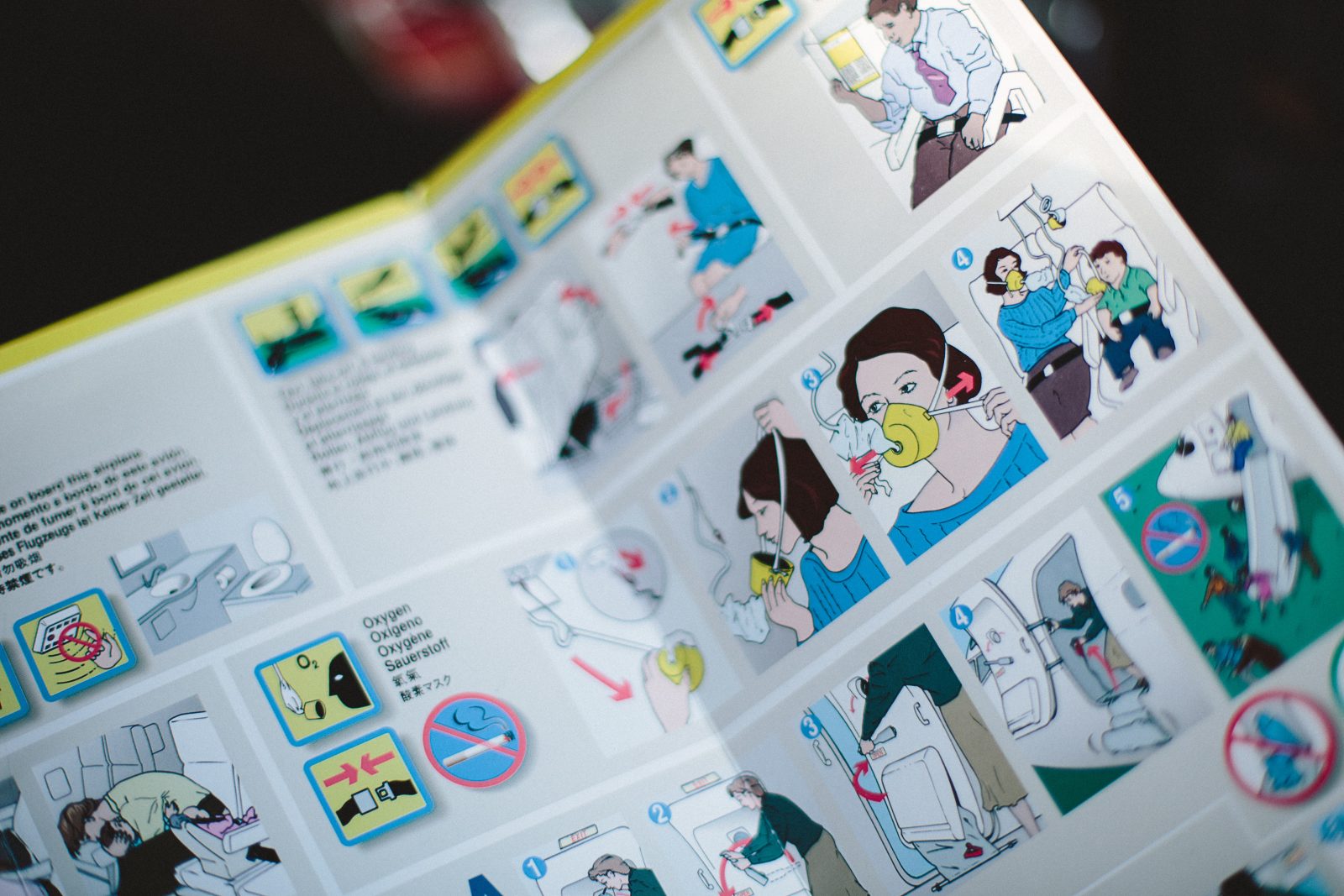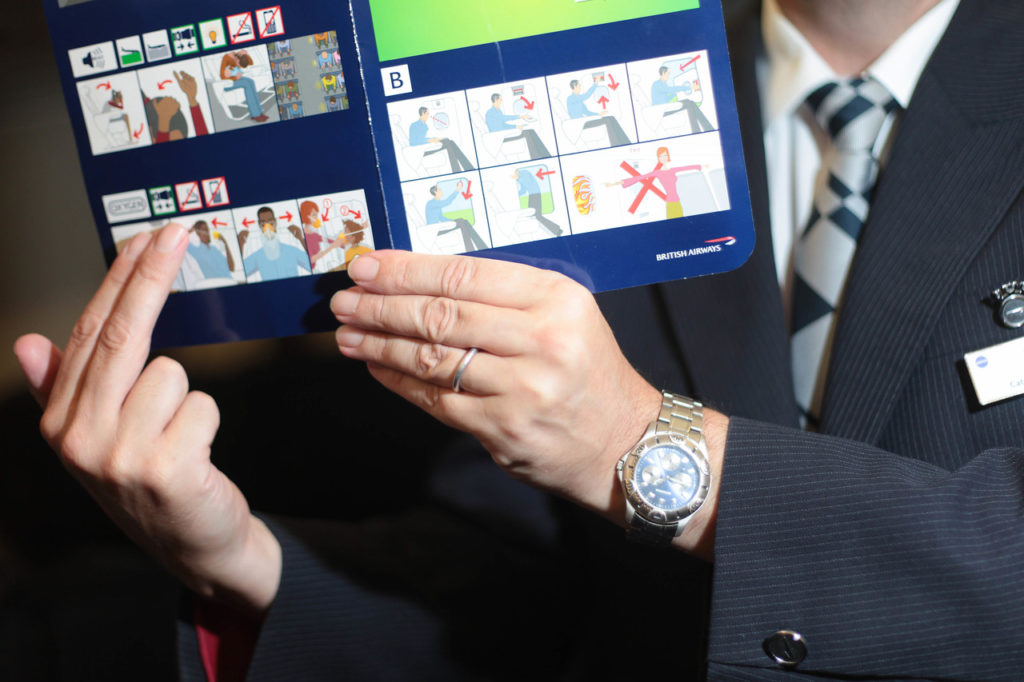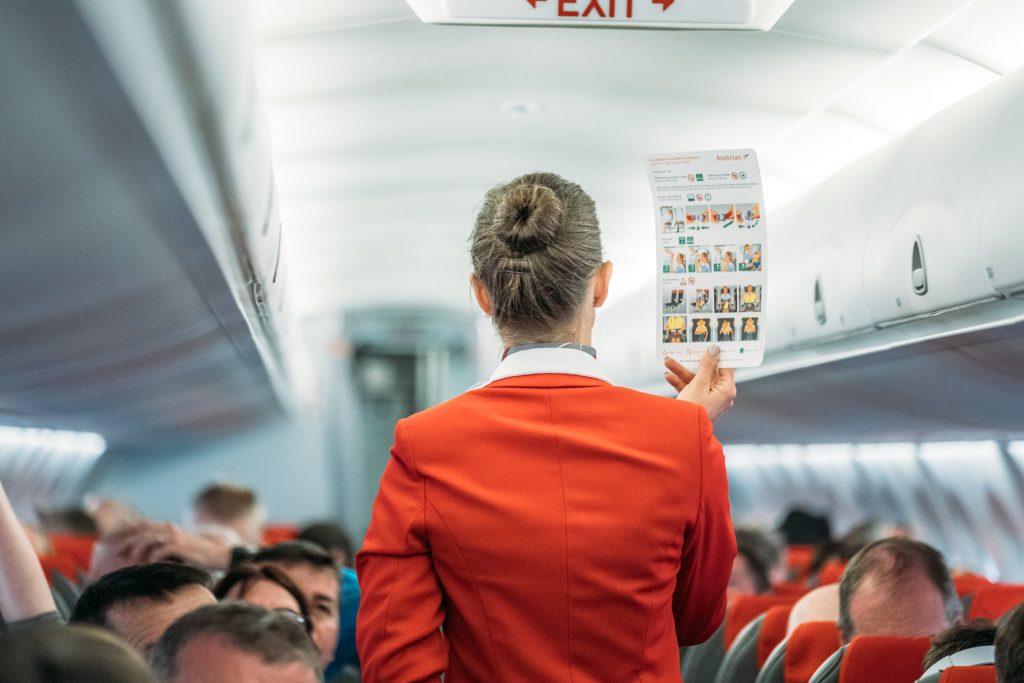
Crew Insider is our series of informative articles that answer some of the most common and less common questions about the aviation industry from the point of view of an industry insider. Our question answerer-in-chief is Mateusz Maszczynski, who has worked in the airline industry for nearly two decades and has honed his expertise in the field through this blog since 2015.
Unless you have been living under a rock for the past few decades, you have no doubt heard of the ‘brace position’ and the commands ‘BRACE, BRACE’ that flight attendants are to shout in unison in the event of an airliner making an emergency landing.
It turns out, however, that experts believe that the commands ‘BRACE, BRACE’ might not actually be that helpful in the event of an emergency landing because many passengers have such a poor understanding of the correct brace position to take.

According to Canada’s Transporation Safety Board, “aircraft occupants can significantly increase their chance of survival and lower their risk of injury by assuming an appropriate brace position,” although research on what constitutes a suitable brace position has evolved dramatically over the years.
The Kegworth air disaster in 1989 was a pivotal moment in the development of the brace position after 47 people were tragically killed when a British Midland Boeing 737 crashed into a motorway embankment.
A groundbreaking study stemming from this crash resulted in the first research-based definition of what constitutes a brace position, although the research has come along way since the 1980s and early 1990s.
In 2016, experts from across the industry even came together to further develop scientifically validated brace positions that are recognized worldwide through a new organization called the International Board for Research into Aircraft Crash Events (IBRACE).
Because so much has changed since the brace position first emerged, experts now fear that passengers might adopt the wrong position if they simply hear the commands ‘BRACE, BRACE!’
That’s why the International Civil Aviation Organization (ICAO) says airlines should adopt directional instructions like “HEADS DOWN, STAY DOWN” or even simply “BEND OVER.”

These kinds of instructions, the UN’s specialized agency for civil aviation says, are more likely to “yield the desired behaviors” that will best protect passengers in the event of a crash landing.
A command like ‘HEADS DOWN, STAY DOWN’ is particularly helpful in the event of an unplanned emergency in which the crew hasn’t had time to give specific emergency instructions or rebrief passengers about the brace position.
There are, though, limitations to the ‘HEADS DOWN, STAY DOWN’ command. For example, this command only really works on airplanes with a single type of forward-facing seat with a lap strap. Nowadays, however, the correct brace position for a Business or a First Class seat might differ a lot from the correct brace position for an Economy seat.
In these mixed-seat configuration cabins, ICAO suggests that more generic commands like ‘BRACE, BRACE!’ will suffice, but airlines should take more time to educate passengers about the correct brace position to adopt.
It might also be more appropriate to use the far simpler ‘BRACE, BRACE!’ command when the emergency landing is planned. Yes, in some cases, the crew will have quite a bit of time to prepare for an emergency landing, and this time should be spent rebriefing passengers on the emergency procedures.
Time permitting, Air Canada, like many international carriers, must give passengers an emergency briefing that includes an explanation of the correct brace position to adopt. Cabin crew then get passengers to practice adopting the brace position so that they can visually check they have adopted it correctly.
Another factor to consider is the languages most of the passengers will speak and understand on any given flight. On a flight with predominantly English-speaking passengers, more directional commands may be useful but these commands could end up being a hindrance if the passengers don’t speak English and don’t understand the instructions.
In any case, ICAO says flight attendants deliver the commands “loudly, assertively, repeatedly and consistently.” They should also be well-paced to prevent confusion amongst passengers with consideration given to how many cabin crew are shouting at the same time.
Thankfully, this shouldn’t be something the vast majority of us ever have to put into practice in real life, but it might just be worth paying a little extra attention to the passenger safety card on your next flight.
Yes, those pictograms are amusing, but they’ll show the correct brace position for the seat type you’re in.
Related
Mateusz Maszczynski honed his skills as an international flight attendant at the most prominent airline in the Middle East and has been flying ever since... most recently for a well known European airline. Matt is passionate about the aviation industry and has become an expert in passenger experience and human-centric stories. Always keeping an ear close to the ground, Matt's industry insights, analysis and news coverage is frequently relied upon by some of the biggest names in journalism.








When I worked as crew at Virgin Atlantic during a 6-month Summer contract in 2022, we were trained in SEP to shout “Heads down, feet back!” during the brace situation, which made much more sense to me than “Brace, brace!”